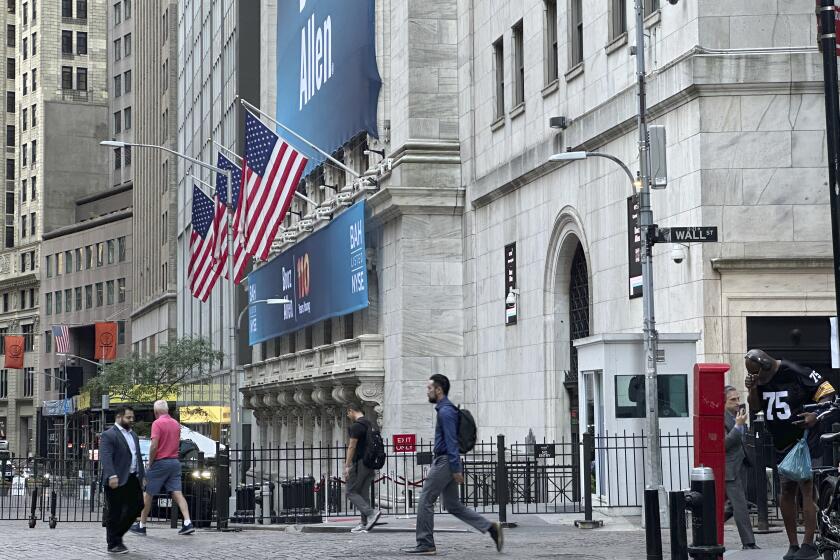Uber’s new service will drive you into Mexico (but it won’t drive you back)
- Share via
Uber is offering a new way to visit Mexico.
On Friday, it will launch Passport, its first cross-border service, offering one-way transportation from San Diego to anywhere in the northern Baja California region.
Destinations can be as far south as Ensenada and as far east as Mexicali. The service is poised to be an alternative to buses, commercial cabs or walking.
“It’s very exciting for us because there are a lot of places where we could have launched a cross-border product, but we recognize the importance of the largest border crossing in the world and the unique relationship between San Diego and Tijuana,” said Christopher Ballard, general manager for Uber in Southern California. “These are cities whose families, cultures and economies are closely linked.”
The cross-border trips are available only through Uber’s black-car option, which costs more than UberX rides but all participating drivers will be commercially licensed and properly insured.
Passport riders can expect to pay a $20 convenience fee on top of per-mile and per-minute rates, in part to make the trek worthwhile for drivers. A trip from downtown San Diego to the Tijuana airport, for instance, will cost around $100, whereas a ride from Pacific Beach to Rosarito might run about $160. Fares can be split among up to four passengers.
The program is designed to ease transportation for a swath of locals already commuting between the two nations. Approximately 50,000 people have taken an Uber ride from the San Diego area to the border.
“We saw that over the course of a month that there were multiple trips beginning and ending on both sides of the border,” Ballard said. “People were organically choosing Uber to go from San Diego to the Tijuana border and vice versa.”
Before Passport, an Uber passenger coming from San Diego would need to end the ride in the U.S., cross the border on foot and then hail a new Uber ride in Tijuana, where the company also operates.
And, in fact, the stop-and-get-out process must still be repeated in reverse. Passport may offer commuters a potentially easier way to get to Mexico -- but it does not do northbound crossings, so it offers no uninterrupted way to get back.
Riders will need appropriate documentation, such as a passport for U.S. citizens.
Although the service won’t remove border-crossing obstacles, city leaders are optimistic that Passport can strengthen the ties between San Diego and Tijuana, already considered sister cities.
“Our economies are linked. Our businesses are linked. Yet our infrastructure isn’t,” said Paola Avila, vice president of international business affairs for the San Diego Regional Chamber of Commerce.
“We depend on a reliable workforce that can get to work every day,” she said. “This is an affordable option that increases efficiency and reduces commute time. And companies might look at including [Passport] as an employee benefit.”
Beyond assisting the more than 70,000 workers already crossing between San Diego and Tijuana each day, Avila expects Passport to serve as a boon for tourism. San Diegans, she said, may be more inclined to shop and dine in Tijuana or visit destinations such as the Valle de Guadalupe wine country if they know they can rely on Uber to get around.
SIGN UP for the free California Inc. business newsletter >>
Visitors to Baja California can continue to electronically hail rides in and around the region just as they would stateside, despite questions of legality.
“App-enabled transportation is not contemplated in current regulations in either the city of Tijuana or Baja California,” Ballard said. “The team is working with government authorities on modern regulations.”
The company also recently launched a new option in Tijuana to connect English-speaking riders with English-speaking UberX drivers, which should help ease the transition for Americans.
There is at least one potential downside to the program. If overly successful in boosting cross-border travel, Uber’s Passport service could contribute to already lengthy northbound wait times, which have been on the rise despite the ongoing expansion of San Ysidro’s Port of Entry.
Presumably, more people entering Mexico would mean more people returning to the U.S., where wait times range from a few minutes to several hours depending on the time of day and the day of week. General pedestrians and vehicles not approved for either the expedited Sentri or Ready Lane programs typically endure the longest delays.
“If we look at current patterns, these people are already going to Mexico,” Ballard said. “We’re just facilitating a way where it’s easier.”
MORE ON UBER
Lawsuit against Uber by shooting suspect is a hoax, authorities say
UberEats launches in L.A., aiming to succeed where others have failed
How a state senator -- whose family is in the taxi business -- put the brakes on two Uber bills






